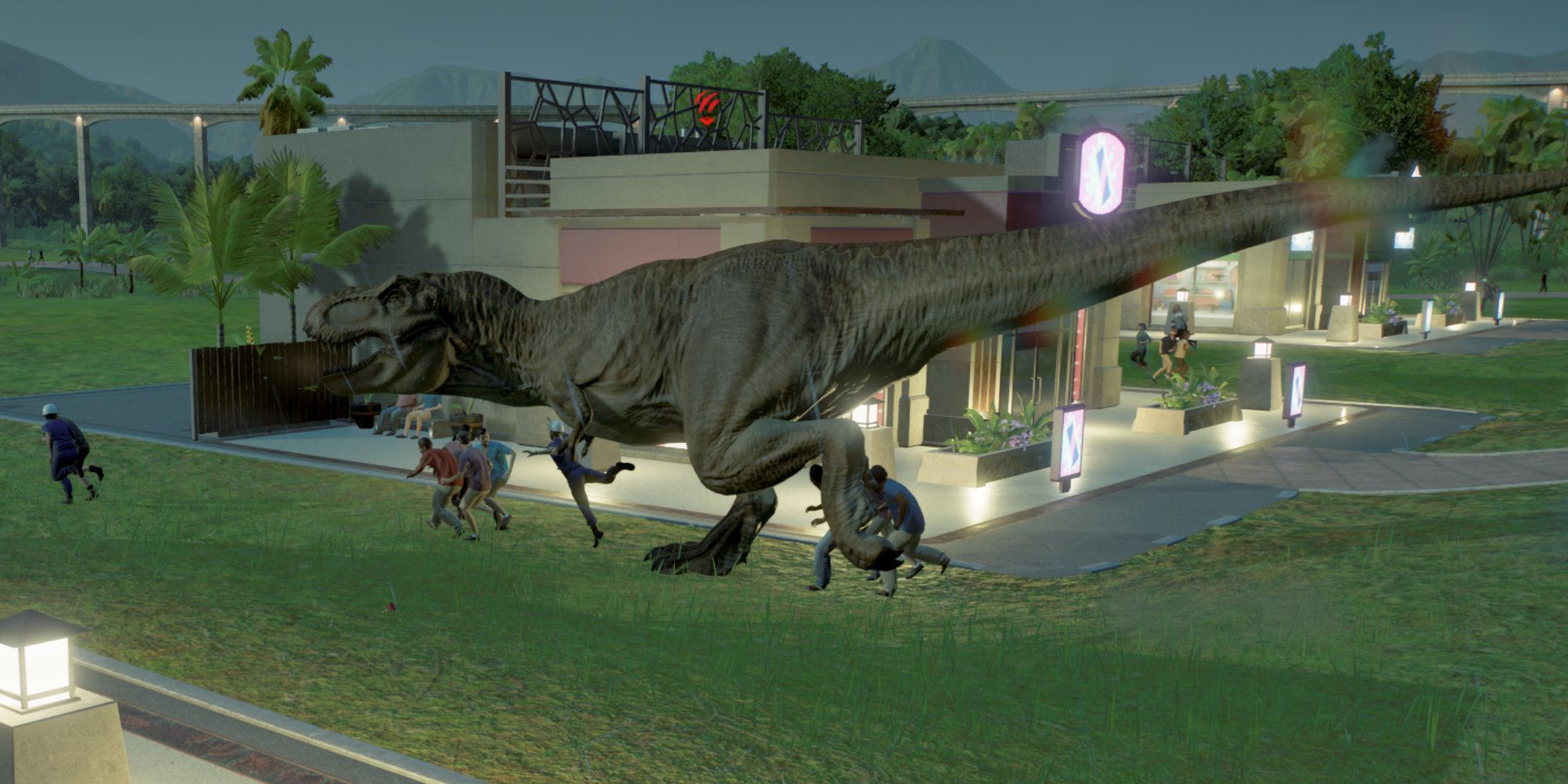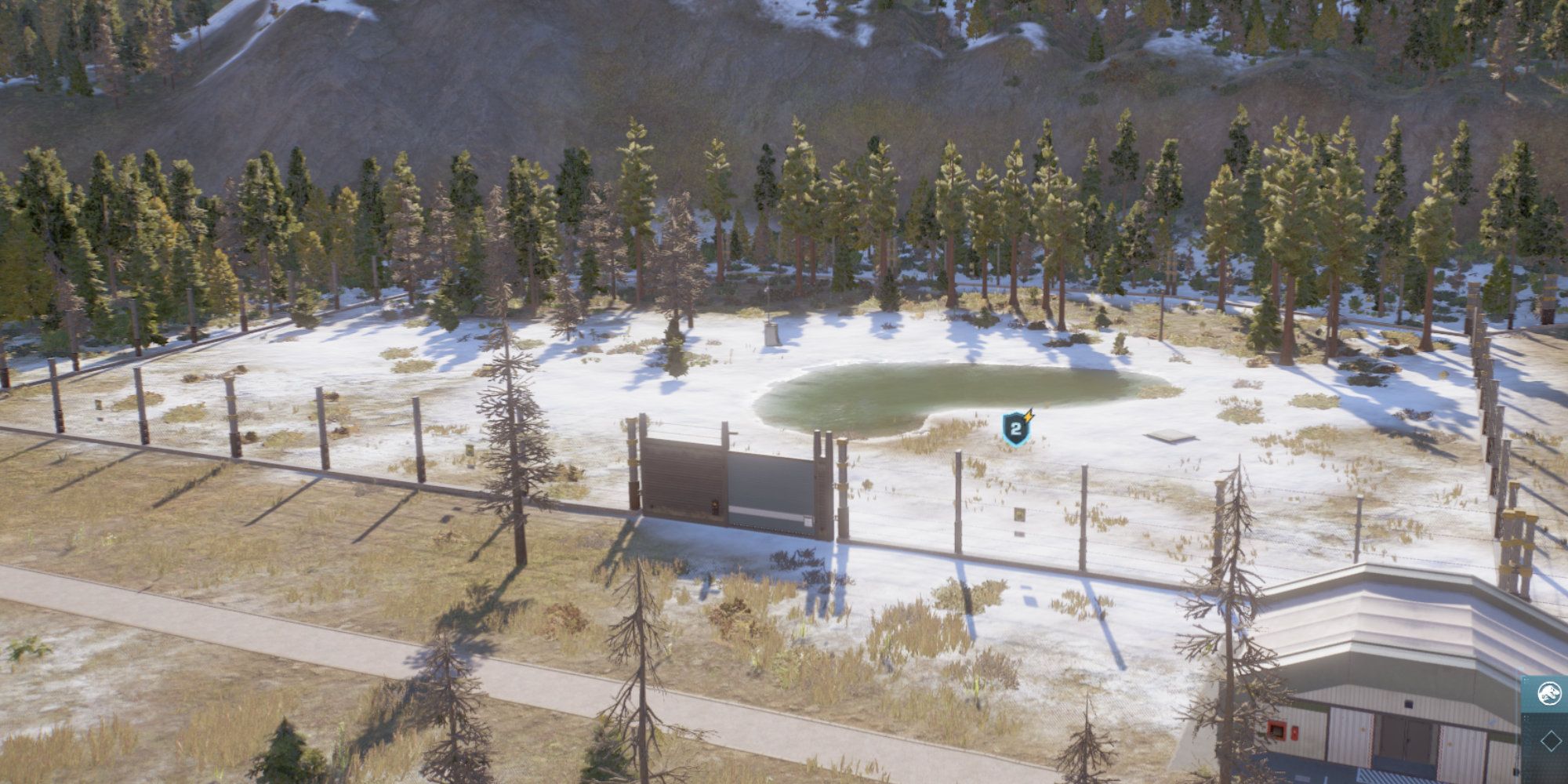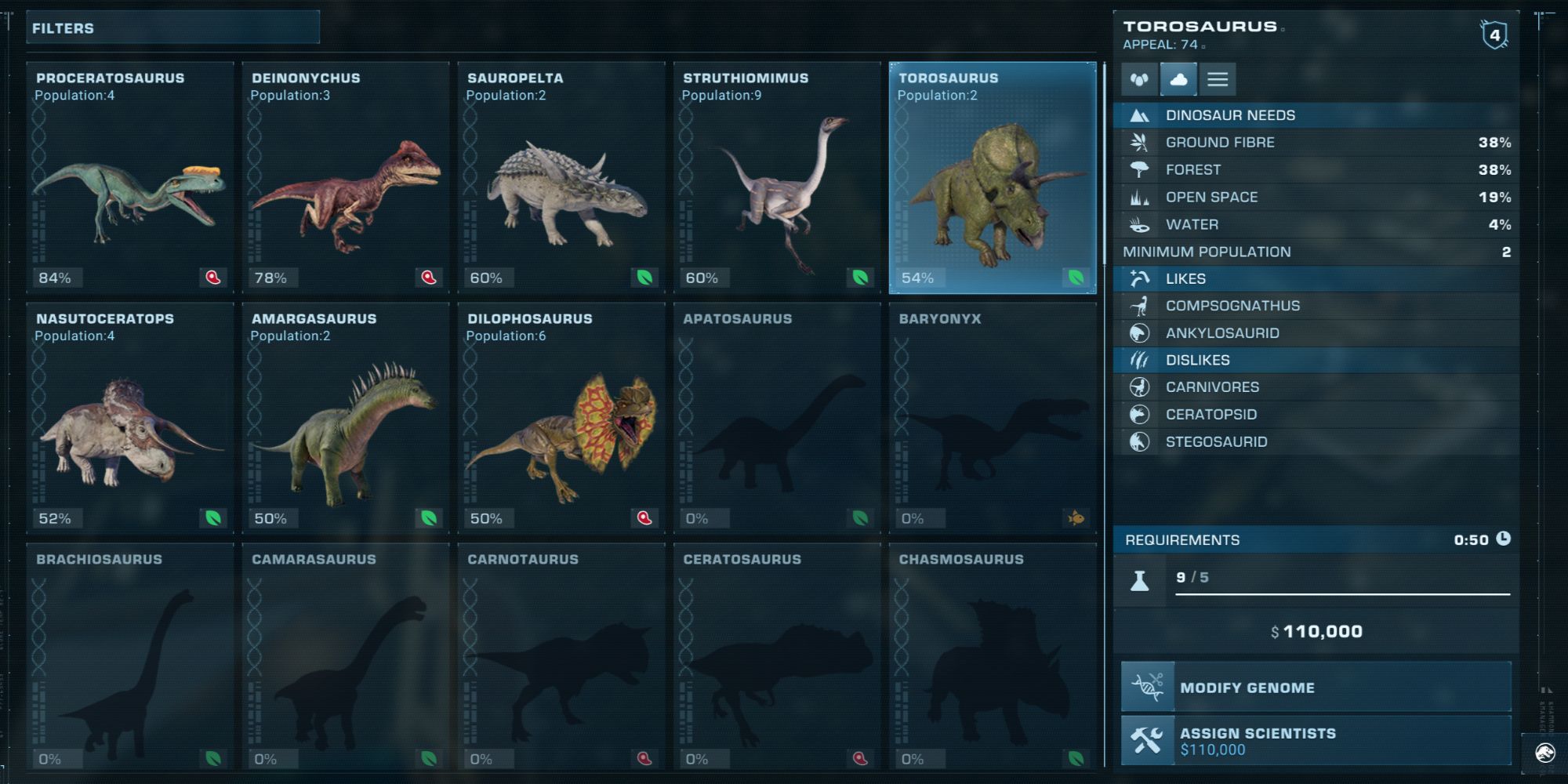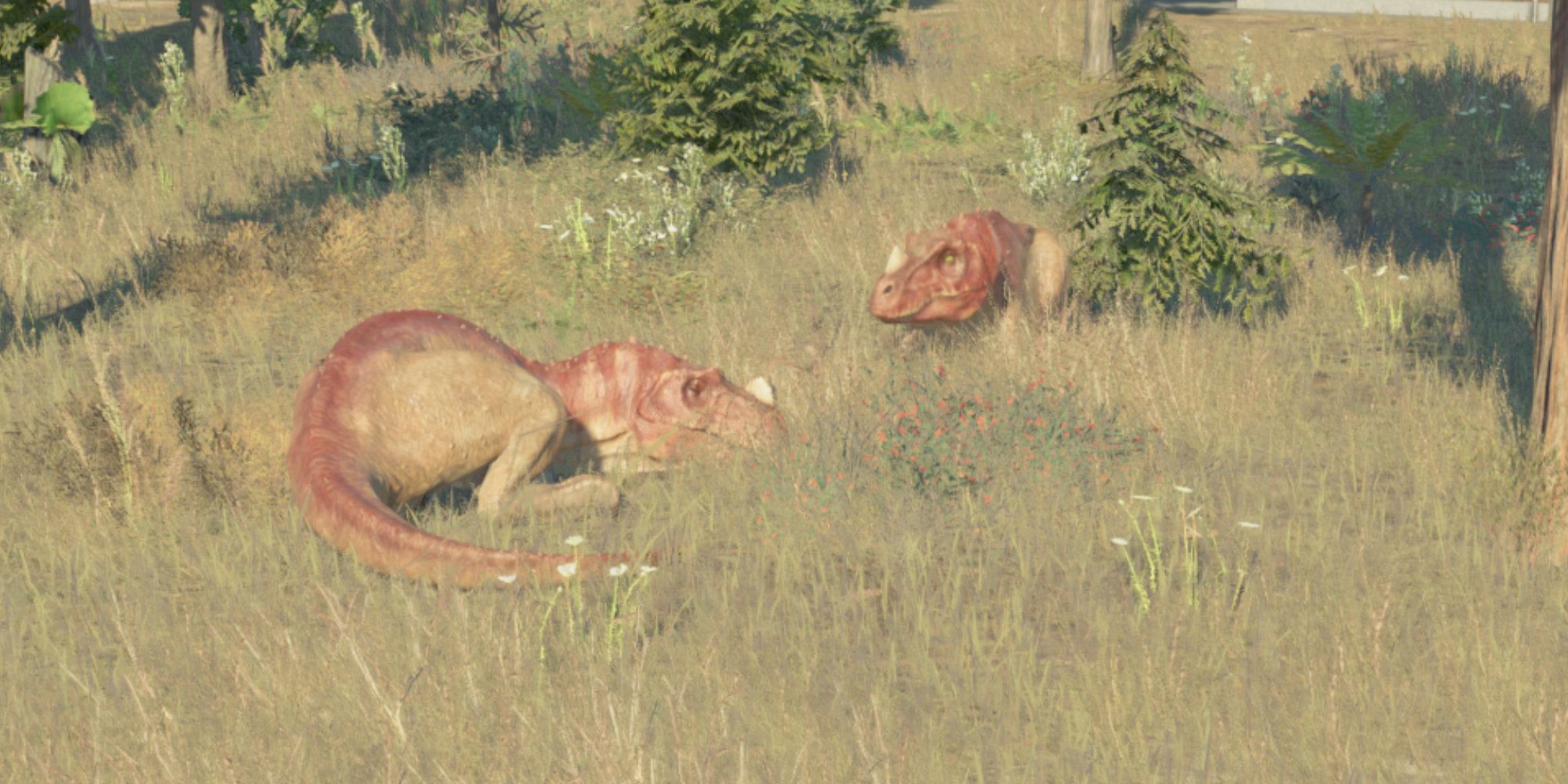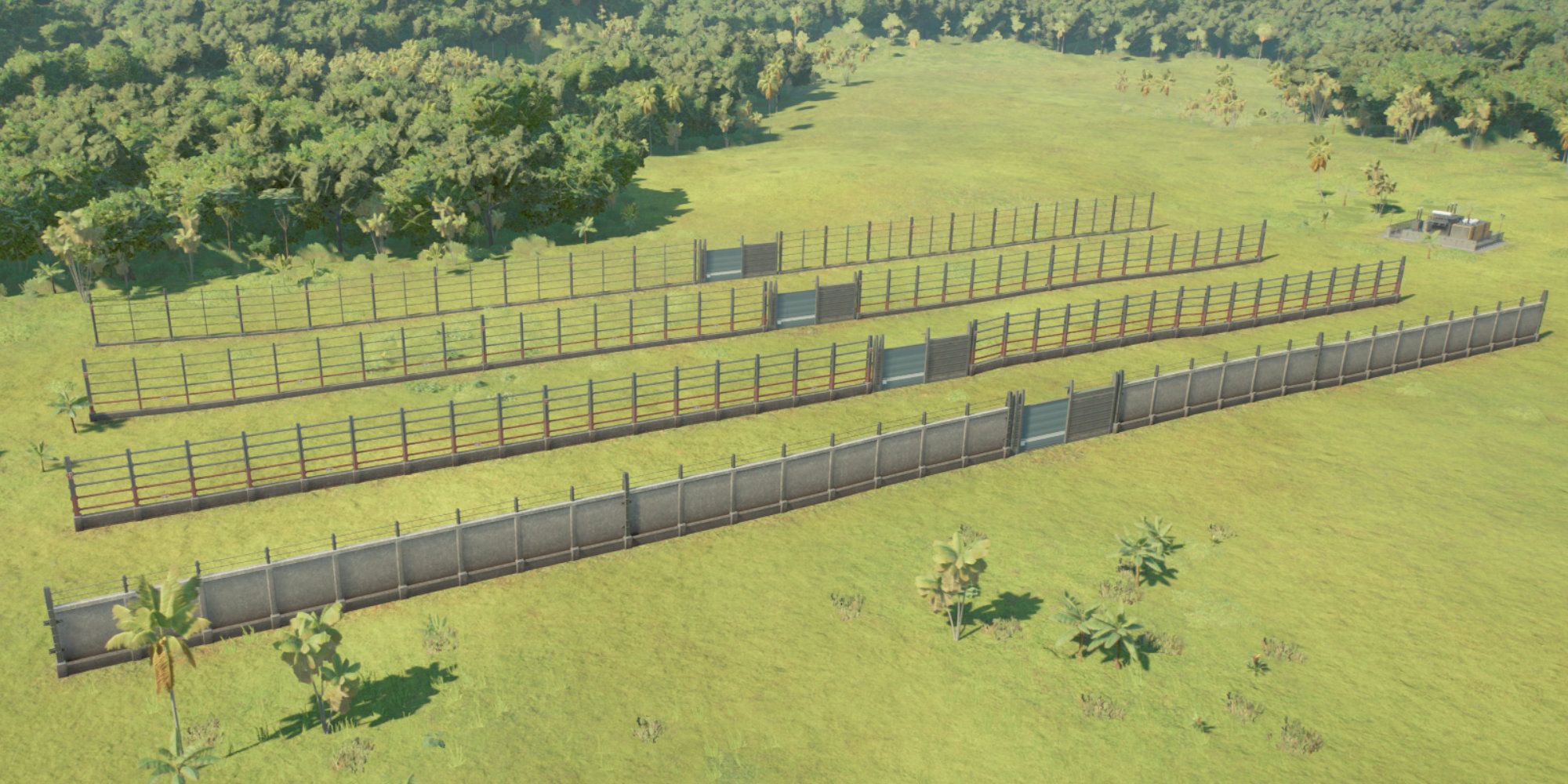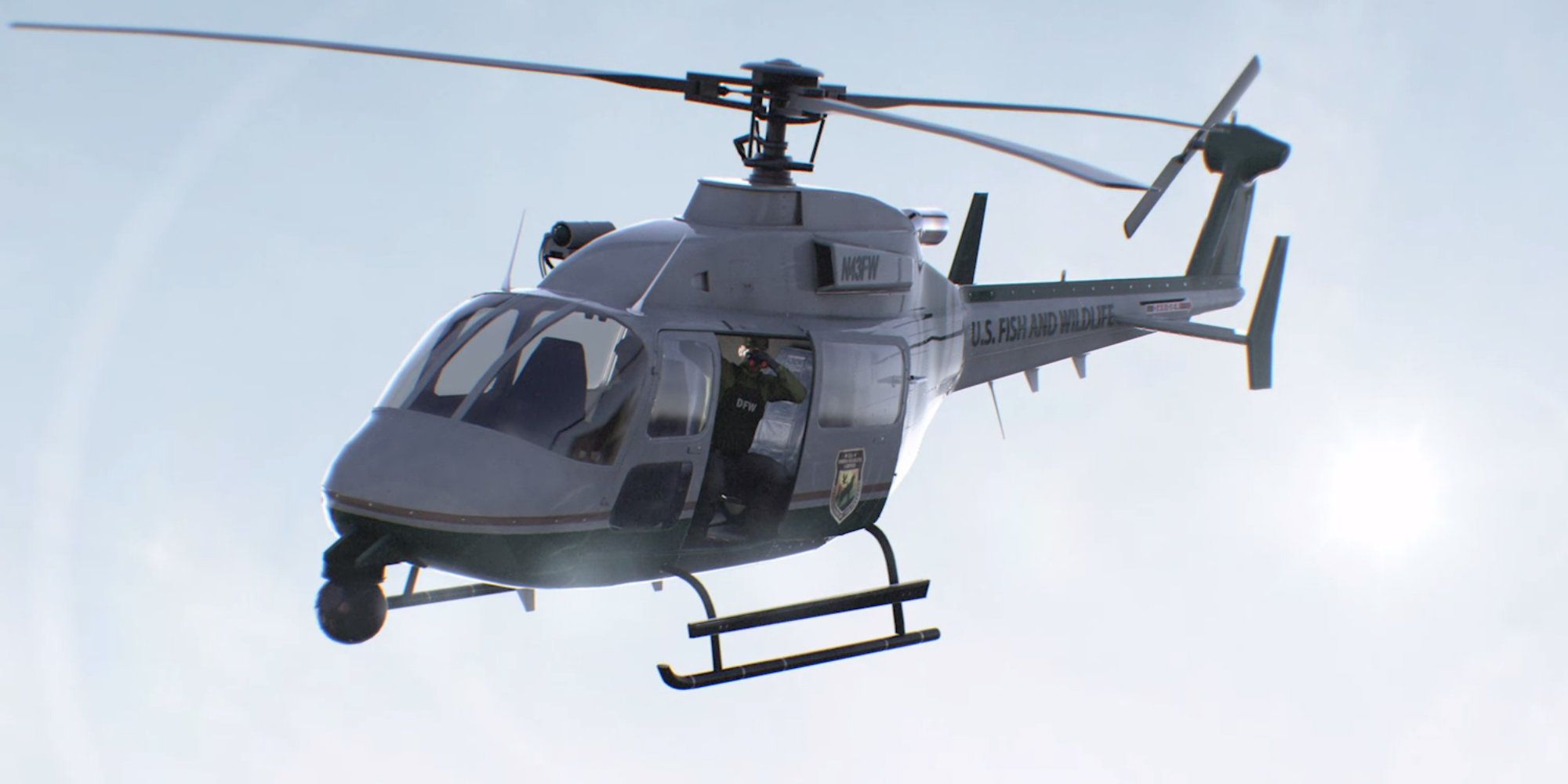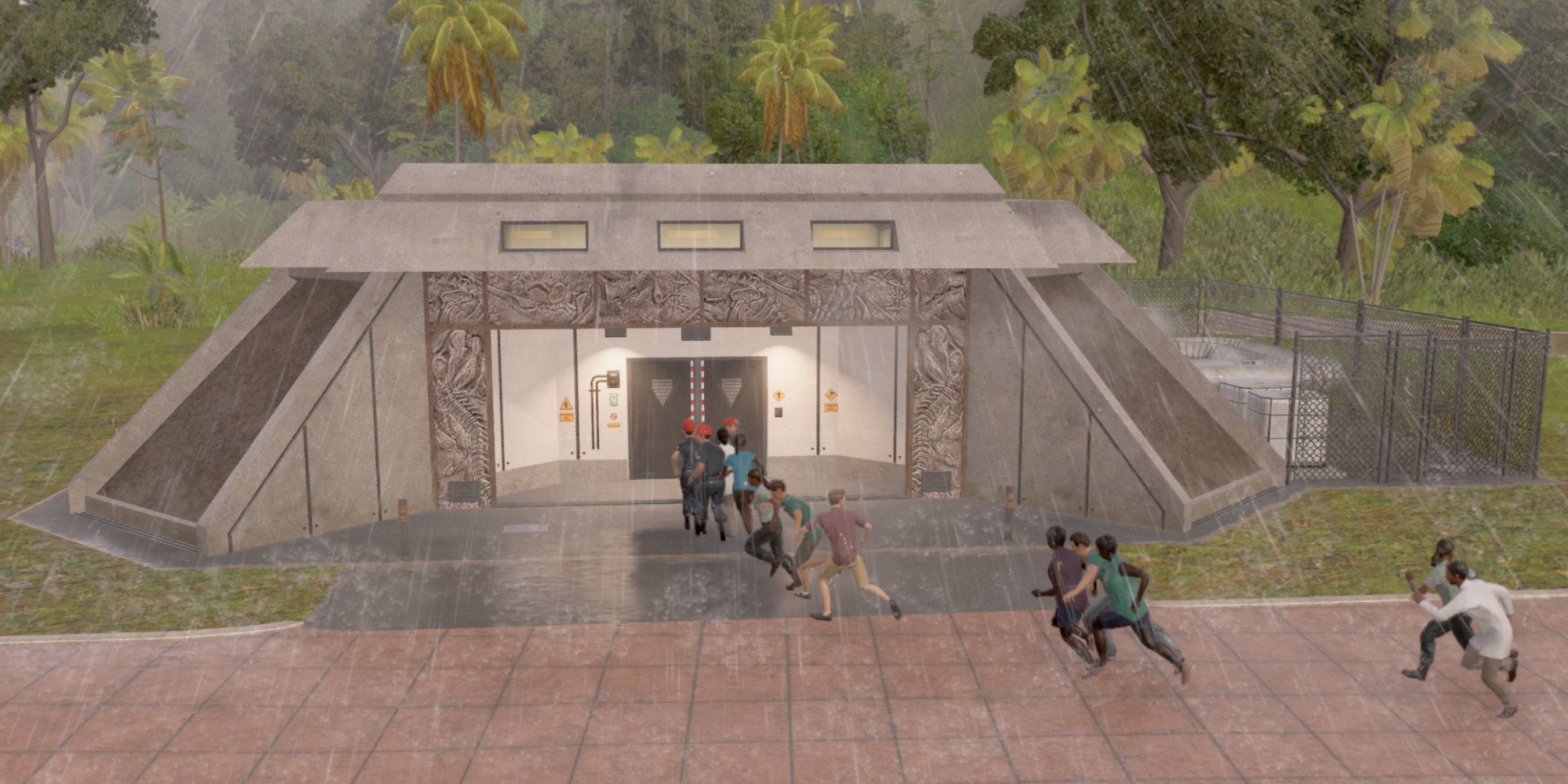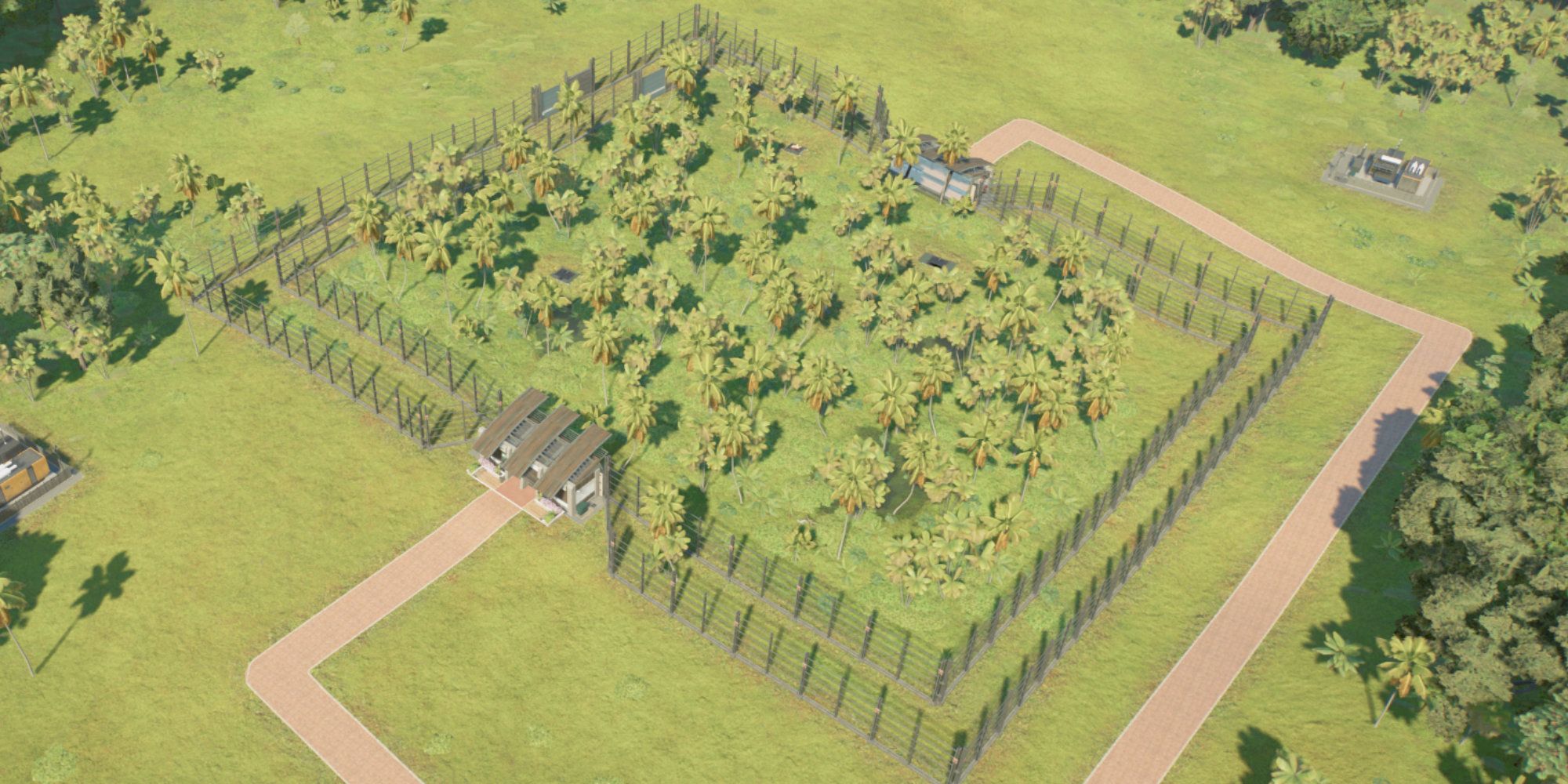Keeping your dinosaurs safe inside their enclosures is one of the most important parts of Jurassic World Evolution 2. If your prehistoric attractions escape then your park rating will drop considerably. If they're carnivores you're also likely to be faced paying out a hefty sum in compensation to the families of any guests who end up as a snack. That's why safety is key. We don't want a T-Rex in the visitors centre on our watch.
In this guide, we take a look at a few simple ways to stop your dinosaurs from escaping. If you're new to the dinosaur park game or just need a refresher we've got you covered.
Preparing An Enclosure Is Key
The first thing you need to do is prepare an enclosure before you put any dinosaurs inside. Keeping dinosaurs comfortable is key to making sure they don't want to try and escape and the sooner you can do this the better.
The higher the comfort level to begin with, the easier it is to keep your dinosaurs happy.
To get things as perfect as possible simply go onto the genome library - either through the menu or via the hatchery. Once here click on the dinosaur you want to house and then select the cloud tab on the right-hand side. This should show you a menu that includes the kind of foliage the dinosaur requires as well as details of their population requirements.
You can now use this information to set up the enclosure. Every dinosaur needs access to water and all pens should have a ranger post with an assigned patrol. Add these and then use the other details in the tab to make an enclosure that is as suitable as you can manage. Once your rangers have made their first check you'll get more accurate data about the dinosaur's comfort and can make adjustments.
Pay Attention To Dinosaur Population
Another statistic you need to take note of is the minimum population. Dinosaurs under this will be lonely, while those too far above are more likely to fight. If you can't create enough dinosaurs in one batch to hit the minimum it is worth using a second hatchery slot to make enough to bring it up to that level. You can then release both sets of dinosaurs in close succession, meaning they are lonely for as little time as possible.
When dinosaurs start dying, either from fights, disease or old age, you'll also need to keep an eye on the population.
Lonely dinosaurs are far more likely to try and break free from their enclosure so you want to minimise this. An easy way to keep an eye on population levels is to rename your ranger posts. If you rename each one with the species and then put the minimum population at the end it serves as a quick reference. You'll need to transport dead dinosaurs out of the park so when you do, count up the ones left and use the ranger post sign to make sure you have enough. You can also check population levels easily in the genome screen we used in the first step.
Research Better Fences
Better fences are not as important as you may think but it's still well worth researching them. Dinosaur happiness is the largest factor in stopping dinosaurs from escaping. If they are happy they will not try to escape and for the most part, any fence will hold them. The only exception appears to be small dinosaurs which can slip between the gaps in cheaper fences. However, the game also has external factors that affect enclosures. They are:
- Power Management - Most fences are electric and power outages will make them useless
- Storms - Weaker fences will break far quicker and more easily during storms
Better fences can mitigate both of these issues. The strongest fence is made of concrete and as such does not require power. It will also better withstand storms. Stronger fences can also withstand more damage from upset dinosaurs and more easily hold smaller carnivores in particular. The investment in better fences becomes more important in levels with more frequent storms or those with power limitations.
Have Backups In Place
As mentioned, while dinosaur happiness is key, external factors can also mean escaped dinosaurs. Preparations for power cuts and storms will go a long way to helping keep dinosaurs secure.
Managing Power Cuts
Powercuts will make your fences useless but having backup generators helps. We recommend researching power stations and setting up power lines for your main power. Then place the generators as a backup for key buildings and carnivore enclosures. This will give you time to carry out repairs on fences and keep your electricity supply stable.
Backup generators will display a red battery icon just before the fuel runs out so if you see this icon pause the game and refill them.
For any dinosaurs that are difficult to keep enclosed the concrete fence is the best option as it removes the need for power while maintaining a high level of security.
Managing Storms
Storm damage is one of the biggest causes of escapes but this can be reduced by making sure fence repair is a priority. When a storm hits and backup power kicks in this should buy you enough time to send ranger teams to carry out fence repairs before they do anything else. Keeping dinosaurs secure should always be your first priority.
Using Shelters And Ranger Teams
When a storm warning appears you should always open all shelters immediately to keep guests safe. As a bonus guests in shelters will also be protected from any escaped dinosaurs as well as from the storm. However, we still don't recommend letting your T-Rex have a taste of freedom. Instead, follow these tips:
- Build as many emergency shelters as you can. The closer they are for guests to reach the less negative effects storms and escapes will have on your park rating. Open them all as soon as you can.
- Have a Response Team helicopter set as an extra patrol on all carnivore enclosures. This means air support will automatically kick in if dinosaurs start to become a danger to rangers or guests.
- Manually assign teams to tranquillize carnivores. When a storm is coming, tranquillizing your most dangerous dinosaurs as soon as possible means they can't escape, even if the fences are broken. A manual override on task priority will help here.
Combining these tips should help keep your dinosaurs happy, healthy and secure. If you still have issues then you can always build two fences to really make sure those dangerous carnivores are secure!
This approach shouldn't be necessary and doesn't look great but it also appears that guests don't care how bad it looks, as long as there are viewing platforms for them to use.

